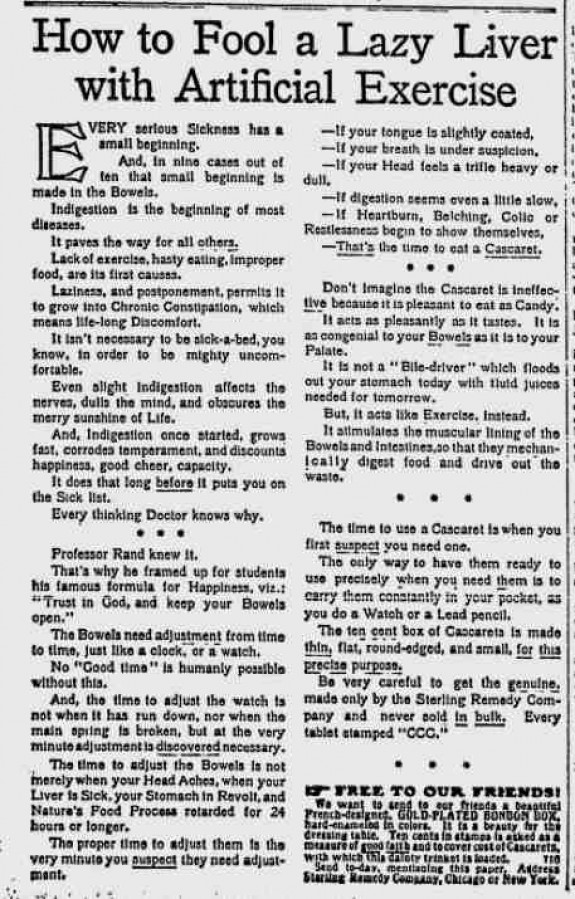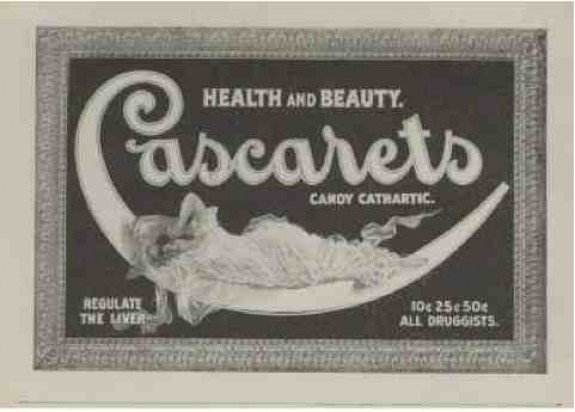Medicine
Mummies, Cannibals, and Vampires
Mummies, Cannibals and Vampires: the History of Corpse Medicine from the Renaissance to the VictoriansThese were the most common drugs derived from the human body. But, as we will see, for certain practitioners and patients, there was almost nothing between the head and the feet which could not be used in some way: hair, brain, heart, skin, liver, urine, menstrual blood, placenta, earwax, saliva and faeces. Medicinal cannibalism was practised to some extent in the Middle Ages. But, with nice irony, it became most popular and pervasive in the era when reports of New World cannibals were circulating amidst the outraged Christians of Rome, Madrid, London and Wittenberg.
Posted By: Alex - Thu Nov 07, 2013 -
Comments (6)
Category: Medicine
Worm Cakes

I wish they provided more information, since I'm not sure whether these cakes actually consisted of ground-up worms or whether they were some kind of anti-worm medication, such as pomegranate extract (which has been known for centuries to be effective against tapeworms).
Posted By: Alex - Fri Sep 20, 2013 -
Comments (9)
Category: Medicine
Left behind in the acupuncture clinic
Acupuncturist Dr. Jeff Tsing says he's "baffled" at how he could have closed up his business for the day and gone home, failing to remember that a patient was still lying on his table, needles in. wfaa.com
Posted By: Alex - Tue Aug 27, 2013 -
Comments (4)
Category: Medicine
Update on the cow urine industry
The "remote nondescript village" of Uttarakshi in India is taking a leap into the modern age. The villagers are helping to finance the construction of "an ultra modern hi tech distillation plant of 8000 litres capacity." What they'll be distilling is cow urine.According to the press release on pharmabiz.com:
If all goes well, the Uttarakshi plant can be expanded to up production to 10,000 litres of the liquid gold daily.
Posted By: Alex - Tue Jul 16, 2013 -
Comments (5)
Category: Medicine, Cows
Fasting Spittle
A little bit of old-time medicine. Reported in "A Collection of Saliva Superstitions" by R. Selare, Folklore (Dec 1939), 50(4).
Posted By: Alex - Fri Jul 12, 2013 -
Comments (12)
Category: Medicine, Body Fluids
Cascarets


"Trust in God, and keep your Bowels open" is my new motto for every situation.
Original ad here.
History of Cascarets.
Posted By: Paul - Wed Apr 17, 2013 -
Comments (6)
Category: Medicine, Excrement, 1900s
Homemade Dialysis Machine Keeps Man Alive For 13 Years
Can't afford dialysis at the hospital? Get some medical equipment, sodium chloride, potassium chloride, sodium bicarbonate and purified water and ... voila!! You can get dialysis in the bathroom!!
Here's the link:
http://www.weirdasianews.com/2013/03/10/chinese-man-lives-13-years-homemade-dialysis-machine/
Seriously -- do not try this at home!! Two of this guy's friends didn't survive the experiment.
Posted By: gdanea - Mon Apr 01, 2013 -
Comments (4)
Category: Medicine
Fecal Wine, Part 2
Back in January, I posted about a Korean fecal wine named Tsongsul, which is drunk as a remedy for all manner of ills. But it turns out there's a long tradition of drinking fecal wine in the UK as well.Over at the Recipes Project, a blog about early modern recipe books, Jonathan Cey describes finding an unusual concoction in the 17th century medicinal recipe book of Johanna St. John.
And apparently Sir Robert Boyle, of the Royal Society, recommended human excrement "dried into powder, and blown into the eyes as a treatment for cataracts."
Posted By: Alex - Mon Mar 11, 2013 -
Comments (6)
Category: Food, Medicine, Excrement
Ayurvedic Remedies
Imagine what you'd smell like if you applied all three of these topical treatments at once! Probably pretty pungent. Not offensive exactly. But hungry street people with a hankering for curry would be following you and licking their lips. You might just as well roll around in your vegetable crisper and spice cabinet.
Posted By: Paul - Sat Mar 02, 2013 -
Comments (2)
Category: Body, Food, Medicine, New Age, India
Humans In Print
It is now possible to print human stem cells. Advances in organ transplantation and treatments for diseases like Parkinsons will surely be positively affected by this in time. Replicator technology coming true once again.
Posted By: Alex - Sun Feb 10, 2013 -
Comments (4)
Category: Medicine

| Who We Are |
|---|
| Alex Boese Alex is the creator and curator of the Museum of Hoaxes. He's also the author of various weird, non-fiction, science-themed books such as Elephants on Acid and Psychedelic Apes. Paul Di Filippo Paul has been paid to put weird ideas into fictional form for over thirty years, in his career as a noted science fiction writer. He has recently begun blogging on many curious topics with three fellow writers at The Inferior 4+1. Contact Us |





